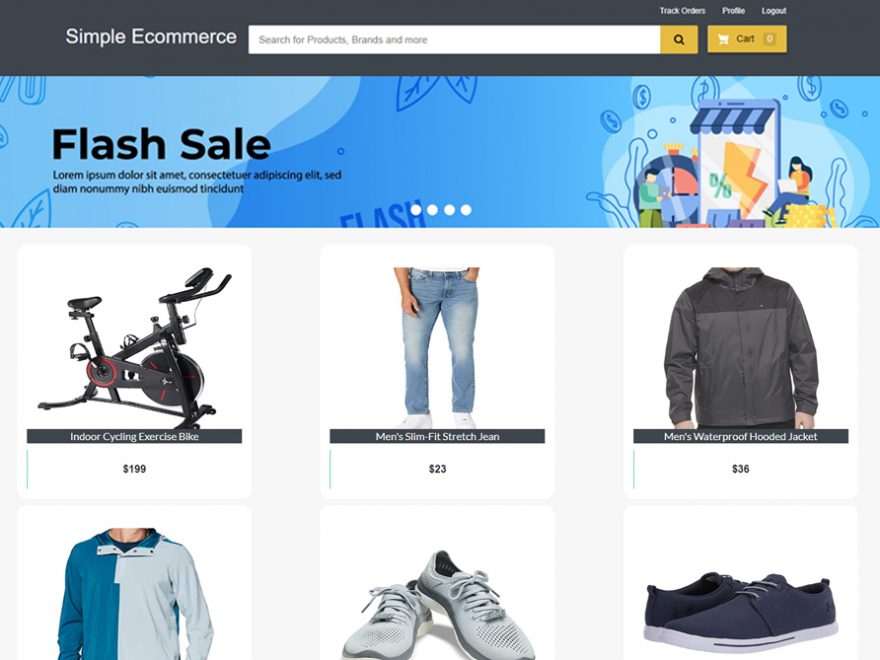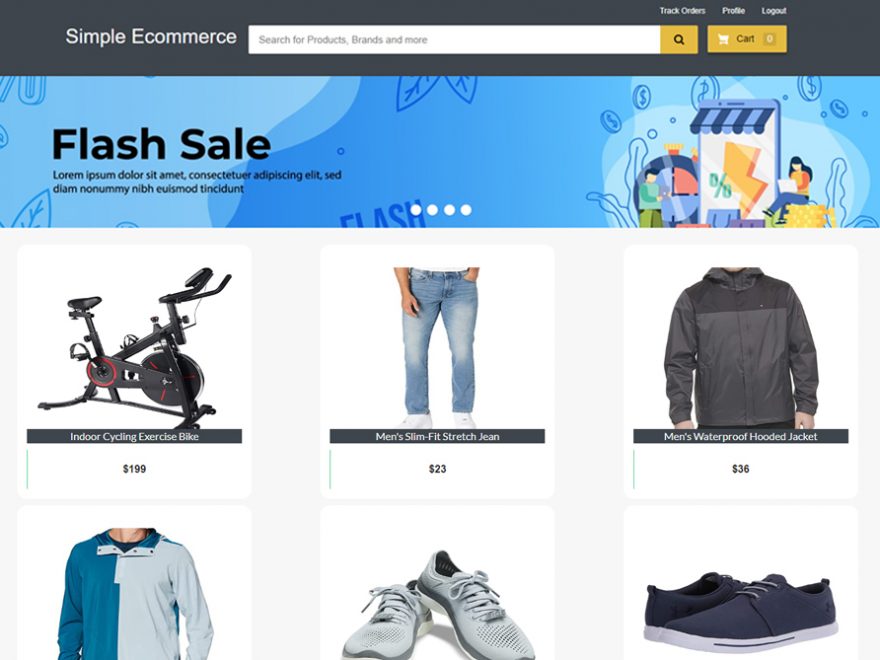A basic project using Python and the Django Web Framework to create an online e-commerce site. The Django project below has all of the major elements that second-year IT students can use for their college projects. It comes with a lot of useful tools that allow customers to shop online, handle orders, and much more. This system, as well as the website’s concept, is well-defined, comparable to real-world scenarios, and well-implemented. Please scroll down to the bottom of this post for the Download button to get a free eCommerce site project in Python Django with source code files.

About E-commerce Site Django Project
This Python Django eCommerce site project focuses mostly on dealing with online shopping and order administration. The system also shows all of the products that are offered. Additionally, the system enables the management of client records. This project is divided into two sections: Customer and Admin Panel. In this web application’s overview, a consumer can easily register from the client side. At first, the website lists all of the available products along with their descriptions. This website, like any other eCommerce website, has a cart system. Customers can add a large number of items to their cart before checking out. When it comes to checkout, there is a basic payment form that clients must fill out. In fact, after a successful payment, consumers can browse their order list and track their orders. Customers can also do searches and edit their user profiles.
Admin Panel
The system is completely under the control of an administrator. He or she has the ability to manage clients, orders, and items. Each part contains its own set of details, such as a name, photos, and other pertinent information. The setup of products is the initial step in the management of this system. Each has a few minor fields, such as a name, a short description, a price, and an image. From the client’s perspective, all of the published items are fully visible. The user can manage the overall records, such as the number of registered users, orders, and published products, by logging into the admin panel. When it comes to registered users, the admin can see a list of them with all of their information. The administrator can perform tasks such as removing or changing client information from this page.
Order Management and Invoice
After a successful payment, the system transfers each and every customer’s order details to the order management section. Every order is tagged as pending by default, which is viewable from both sides. An administrator can see a list of outstanding orders and take appropriate action. An administrator must update each order’s status in order to accomplish this. The status of an order can be changed from pending to confirmed, on the way, or delivered. Which is entirely dependent on the status of their product and the stage of delivery. Customers may actually observe and follow each and every order with each and every change. This allows them to be informed about their orders and when they will arrive. Customers can also obtain an invoice from the orders area, which includes all relevant information.
A basic project using Python and the Django Web Framework to create an online e-commerce site. The Django project below has all of the major elements that second-year IT students can use for their college projects. It comes with a lot of useful tools that allow customers to shop online, handle orders, and much more. This system, as well as the website’s concept, is well-defined, comparable to real-world scenarios, and well-implemented. Please scroll down to the bottom of this post for the Download button to get a free eCommerce site project in Python Django with source code files.
About E-commerce Site Django Project
This Python Django eCommerce site project focuses mostly on dealing with online shopping and order administration. The system also shows all of the products that are offered. Additionally, the system enables the management of client records. This project is divided into two sections: Customer and Admin Panel. In this web application’s overview, a consumer can easily register from the client side. At first, the website lists all of the available products along with their descriptions. This website, like any other eCommerce website, has a cart system. Customers can add a large number of items to their cart before checking out. When it comes to checkout, there is a basic payment form that clients must fill out. In fact, after a successful payment, consumers can browse their order list and track their orders. Customers can also do searches and edit their user profiles.
Admin Panel
The system is completely under the control of an administrator. He or she has the ability to manage clients, orders, and items. Each part contains its own set of details, such as a name, photos, and other pertinent information. The setup of products is the initial step in the management of this system. Each has a few minor fields, such as a name, a short description, a price, and an image. From the client’s perspective, all of the published items are fully visible. The user can manage the overall records, such as the number of registered users, orders, and published products, by logging into the admin panel. When it comes to registered users, the admin can see a list of them with all of their information. The administrator can perform tasks such as removing or changing client information from this page.
Order Management and Invoice
After a successful payment, the system transfers each and every customer’s order details to the order management section. Every order is tagged as pending by default, which is viewable from both sides. An administrator can see a list of outstanding orders and take appropriate action. An administrator must update each order’s status in order to accomplish this. The status of an order can be changed from pending to confirmed, on the way, or delivered. Which is entirely dependent on the status of their product and the stage of delivery. Customers may actually observe and follow each and every order with each and every change. This allows them to be informed about their orders and when they will arrive. Customers can also obtain an invoice from the orders area, which includes all relevant information.
Finally, while using this eCommerce Site Project in Python Django Framework, a clean and easy dashboard is presented with multiple color choices for a better user experience. A free open-source CSS framework for its UI elements; Bootstrap is also on board with some Vanilla CSS. Presenting a new e-commerce website project written in Python Django, complete with an admin panel and client-side interactivity. That, too, has all of the necessary characteristics for follow-up, as well as a competent resource for educational reasons
Available Features:
- Client-Side Interaction
- Admin Panel
- Customer Registration
- Add to Cart System
- Search Products
- Simple Payment Structure
- List Orders
- Track Orders
- Download Invoice (PDF)
- View/Update Profile
- Order Management
- Product Management
- Customer Management
|
Project Name: |
Ecommerce Site in Python Django and MYSQL |
|
Technologies Used: |
Python with Django Web Framework |
|
Database: |
MYSQL |
|
Type: |
Website |
|
Developer: |
Hanumanthu, Nagesh |
How to download Project with Source Code.
How to Download Project with Source Code on your computer. Contact our Organization or Message me on
Full Project Report and Setup
We Charges @99/-
Telegram : @Aryahanumanthu
WhatsApp : +917348878215
Conatct Details : +917348878215 , +919844896713 ,

Leave a comment